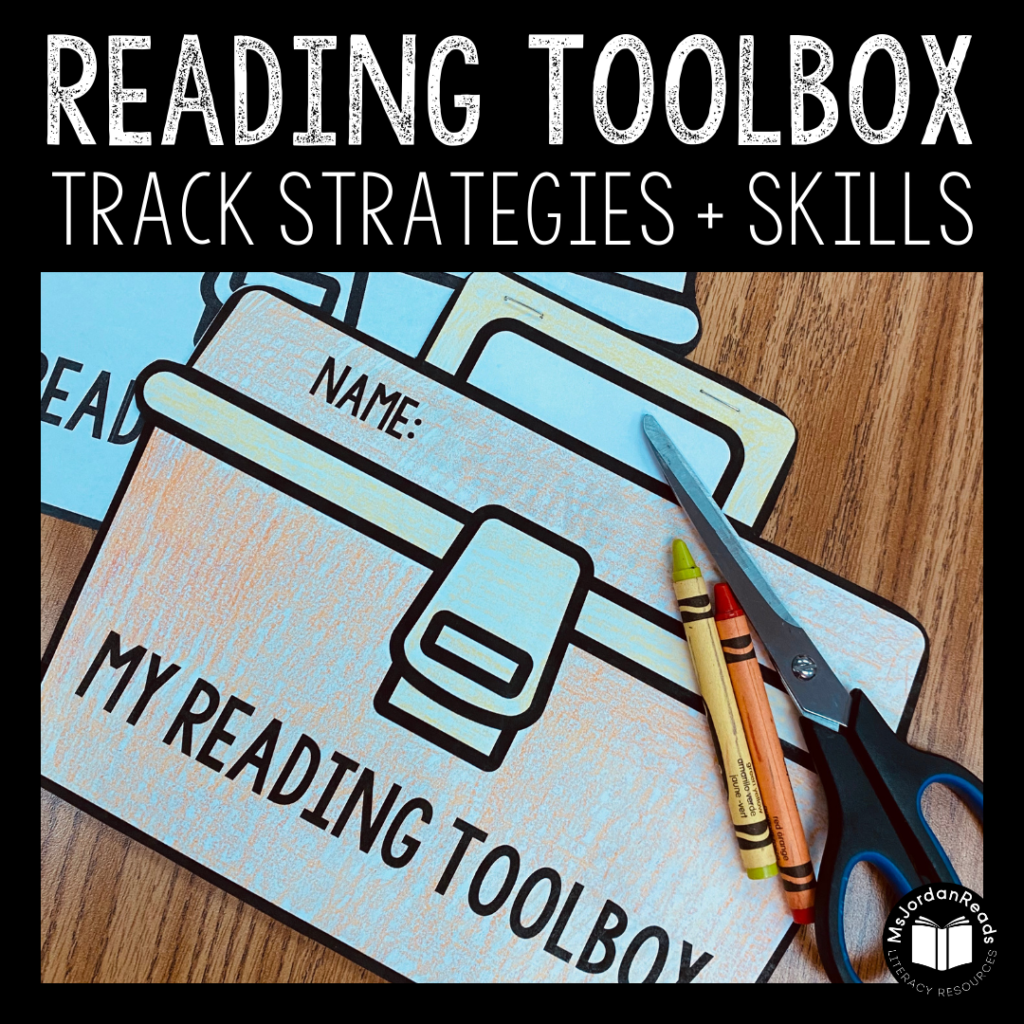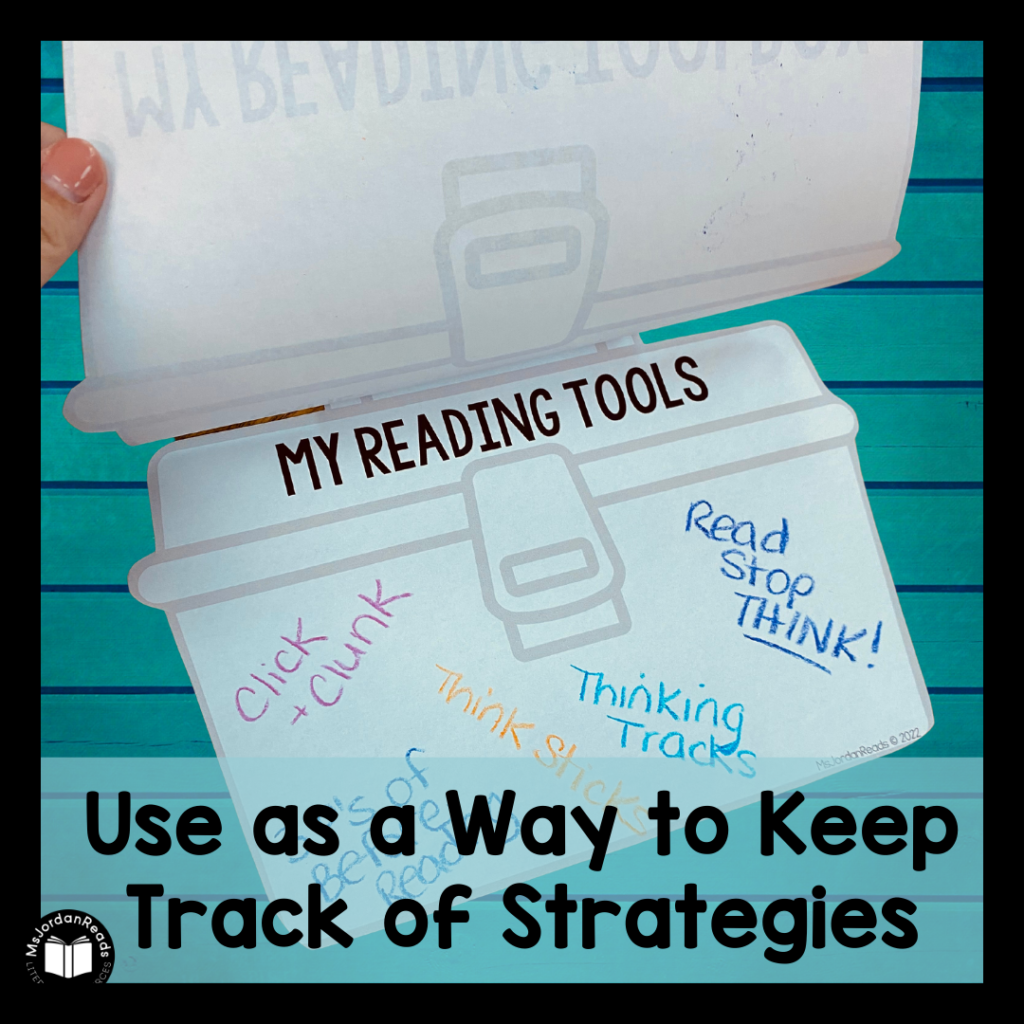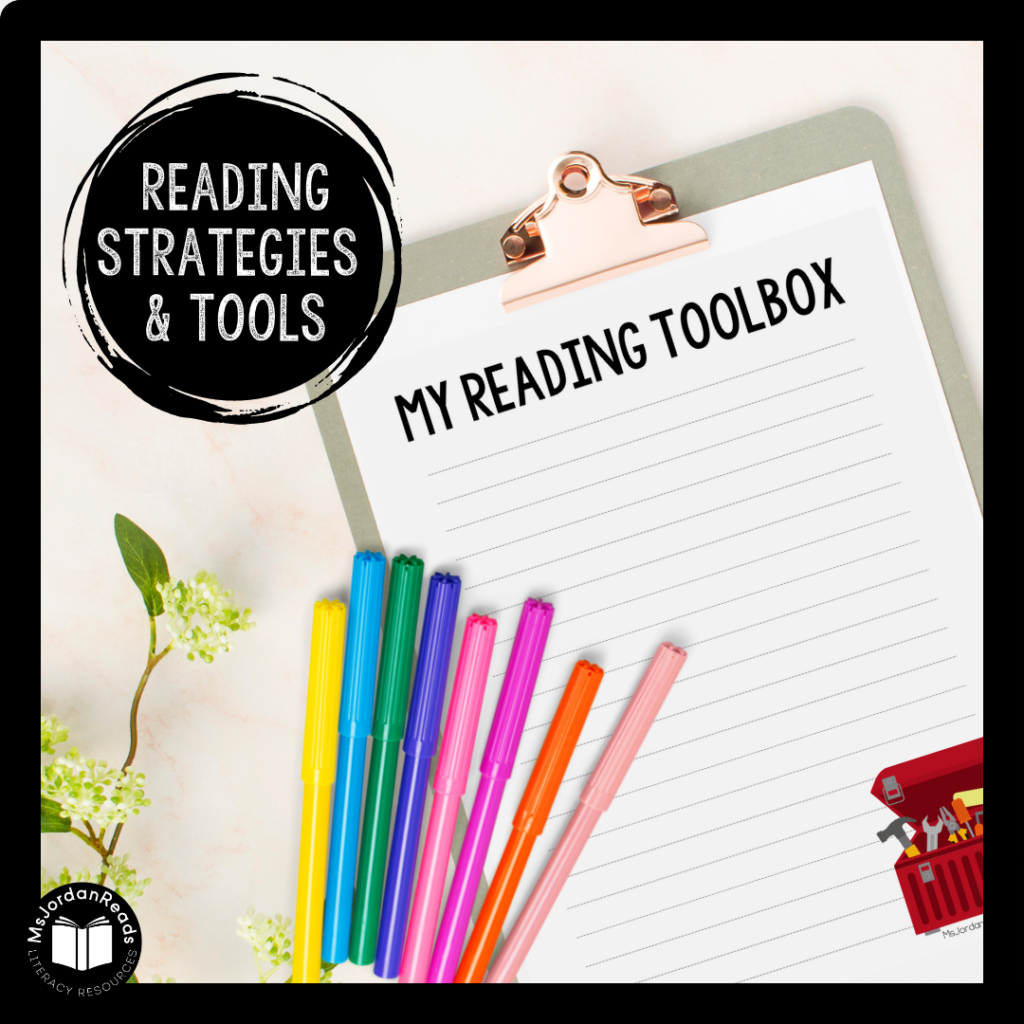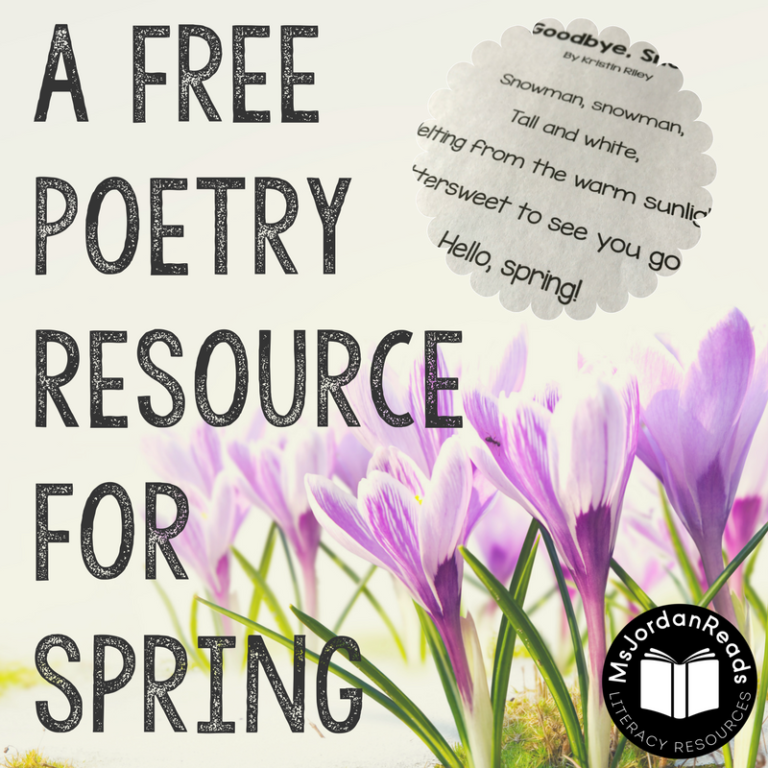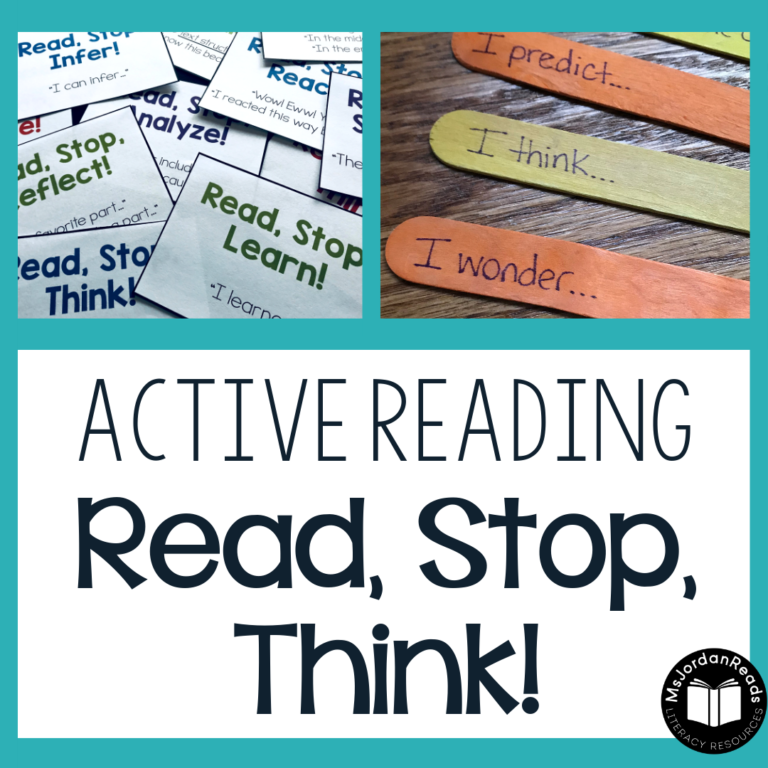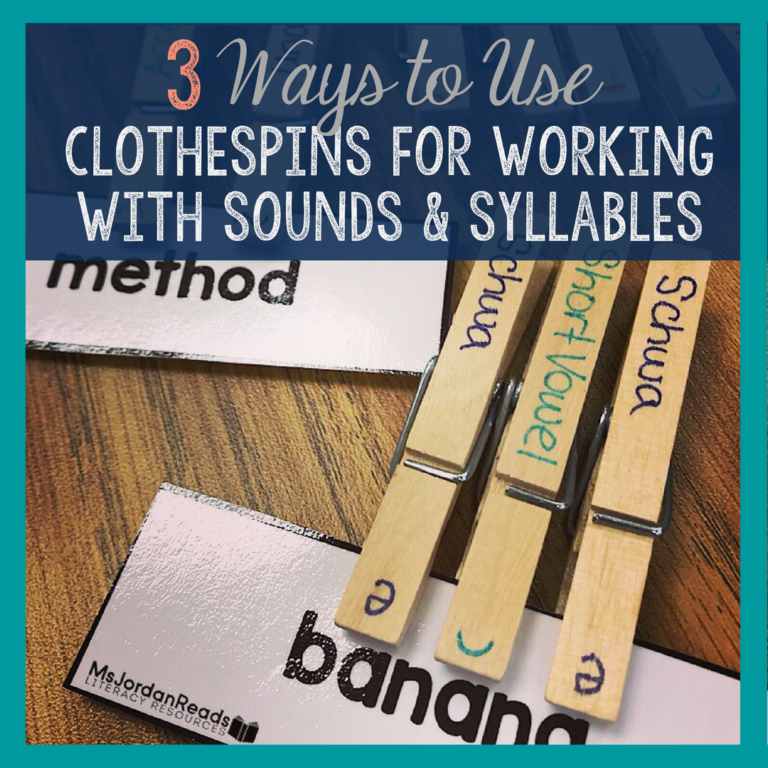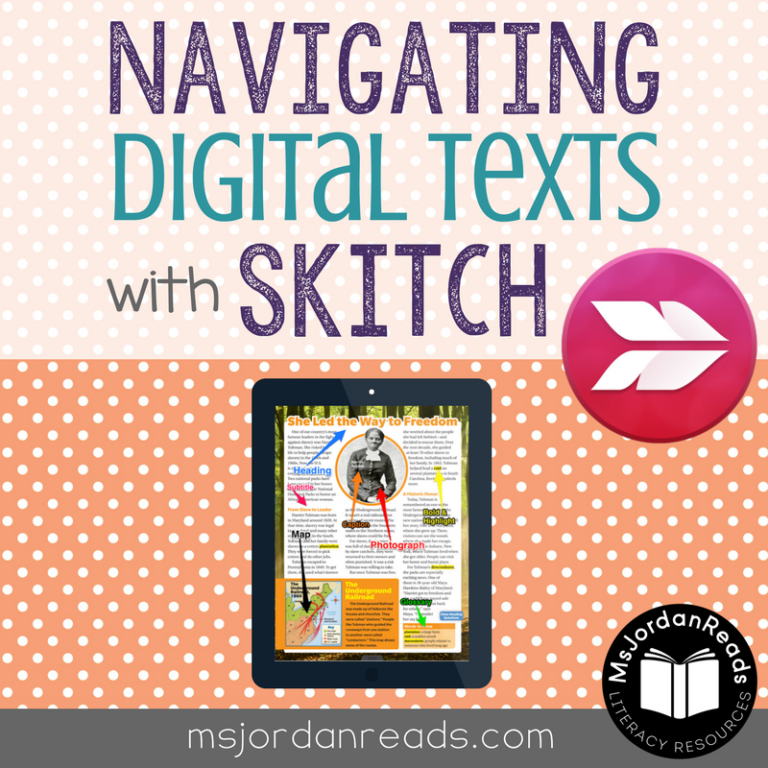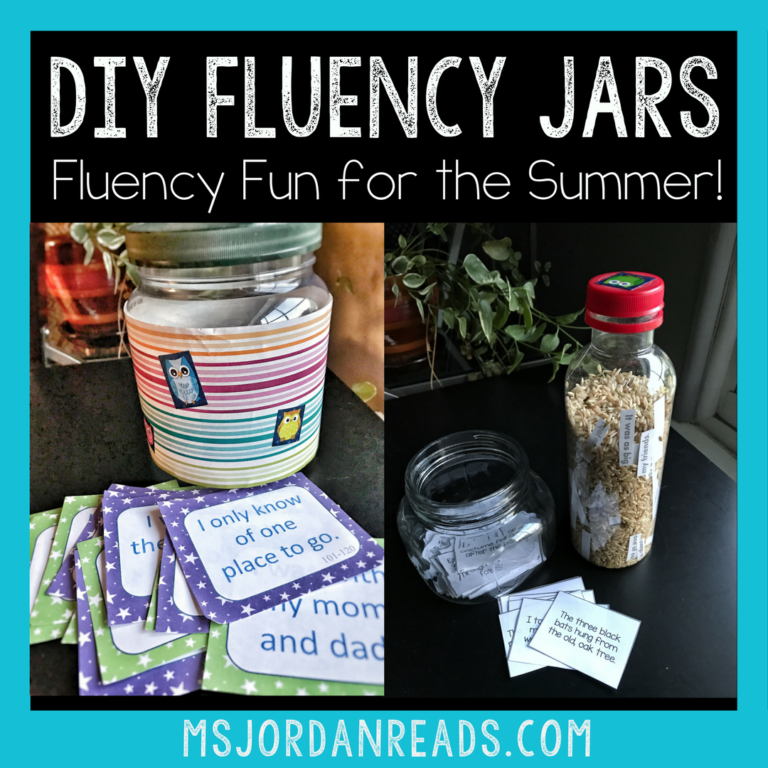My Reading Toolbox: Tracking Reading Strategies Throughout the Year
A reading toolbox is a collection of strategies and skills (tools) that students apply while they are reading. It is specific to each student and acts as an inventory of reading strategies and skills that the student has accumulated throughout their reading journey. These tools are the skills and strategies that they use to decode and comprehend the texts they are reading. Of course there are specific strategies they learn at each grade level, but the ones that “stick” and stay in their toolbox from year to year are the ones they know how to apply.
A students reading toolbox may change from year to year, especially as they navigate new texts and genres. Perhaps their toolbox from when they were reading emergent level texts is filled with “learning to read” decoding and monitoring strategies, but later it will shift to “reading to learn” strategies for active reading and higher level thinking as they start to navigate chapter books and more complex text structures.
Are you ready to dig deeper into how to use a reading toolbox with your students? Keep reading to learn about how you can try this out in your classroom.
Reading Toolbox for Folders + Notebooks
Each year, your students are learning new strategies and collecting new tools to add to their toolbox. As a new school year begins, they are dusting off tools from previous years and getting ready to add new ones that they are learning.
At the beginning of the year, ask your students “What’s in your reading toolbox?” Students can reflect on the tools they are already using as readers. This pre-assessment allows them to reflect on the strategies and skills that they use each day and opens their minds for new tools to be added.
For many of my groups, I like to have them create a reading toolbox that they add to throughout the year. This toolbox can be a paper toolbox (I use this flap book!) that they can record in and illustrate, or it can just be a recording sheet where they list the tools learned. Students keep these toolbox lists in the front of their folders, or sometimes I have them glue them into the front cover of their reading notebooks. They can also just use the first page in their reading notebooks to list these tools, sort of like a table of contents.
As the year goes on, students write down strategies that they use as part of the active and strategic reading process, but they can also write down comprehension strategies that they learn specific to genres and text structures. At the end of the year, each student has a HUGE list of strategies that they can refer back to and use when trying to remember “what good readers do.” They can look back on their toolbox to refresh their memories of strategies and skills learned, and can even use it to celebrate all that they learned.
The best part is, students are able to take ownership of their reading tools and are in charge of their own reading toolbox. The reading tools that are the most helpful will be tools they carry with them into the next year!
Reading Toolbox for Small Group Planning
Do you love the idea of a reading toolbox but not ready to try have your students create one? Consider keeping a reading toolbox for your own for planning or record keeping.
There are some years that keeping a reading toolbox is too much of a commitment, or it just doesn’t make sense. Perhaps it would take more time than I am willing to dedicate each week, or the intervention program I’m using is too structured and doesn’t allow much wiggle room for extra activities. With these groups, I will create a reading toolbox sheet specific to that group where I can keep record the strategies and skills we cover.
Similar to my intervention menu, using a reading toolbox recording page allows me to keep track of interventions and strategies the students have learned and can be used to assess which strategies my students are applying. I keep this list in my small group folders, but you can easily add it to your daily plan book or wherever it makes sense for you to refer back to. I love that I can make a copy of the toolbox to include in my student data folders at the end of the year, and the teacher who works with that student the next year knows what strategies they’ve covered.
Students can still complete an end-of-the-year reflection of strategies learned (and can use my toolbox recording page as a reference) but they aren’t in charge of the week-to-week recording of strategies.
Download FREE Reading Toolbox Pages
Are you ready to try this out with your students or small groups? Download a sample of my “print + go” reading toolbox pages by clicking the image or button below. These can be used for students to reflect on the strategies and skills they have learned throughout the year or for you to use next year as you start planning your school year!


